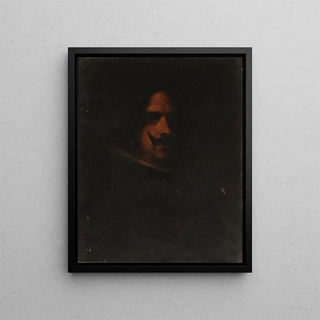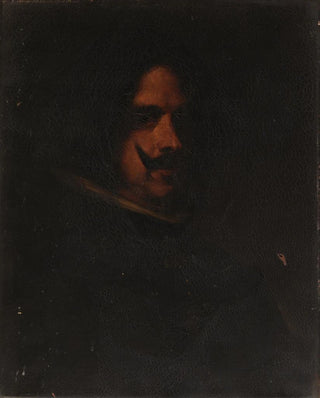Art print | Head of a man Copy after Diego Velázquez - William Merritt Chase


View from behind

Frame (optional)
Art print Tête d'homme Copy after Diego Velázquez - William Merritt Chase – Captivating Introduction
Art is a mirror that reflects not only an artist's vision but also the era and context in which they evolve. The art print Tête d'homme Copy after Diego Velázquez - William Merritt Chase exemplifies this vividly. This piece, rooted in the tradition of copies of old masters, invites us to rediscover Velázquez's mastery through Chase's perspective. By engaging with this masterpiece, Chase aims not merely to reproduce but to dialogue with his predecessor's artistic legacy, while adding his own sensitivity. In doing so, he immerses us in a reflection on art, technique, and the transmission of knowledge.
Style and uniqueness of the work
William Merritt Chase's art print stands out for its ability to capture the very essence of Velázquez's original portrait, while infusing it with a personal touch. The work is characterized by striking realism, where every detail—from the play of light on the face to the delicate nuances of shadows—is handled with remarkable precision. Chase, a true virtuoso, manages to evoke the psychological depth of the model, while respecting the palette and composition that define Velázquez's fame. This approach demonstrates not only his technical skill but also his deep understanding of the visual language of baroque art. The vibrant colors and rich texture of the painting reveal a sensitivity that echoes human emotions, allowing viewers to connect intimately with the depicted subject.
The artist and his influence
William Merritt Chase, an iconic figure of the American Impressionist movement, is often recognized for his ability to blend tradition and innovation. Trained at the Munich Academy of Fine Arts, he was profoundly influenced by European masters, including Velázquez. Chase successfully integrated these influences into his own work, developing a style that combines academic rigor with a freer, more intuitive approach. His fascination with light and color, inherited from Impressionism, is evident in the art print Tête d'homme, where each brushstroke seems to vibrate under the effect of subtle lighting. Paying homage to Velázquez, Chase does not

Matte finish

View from behind

Frame (optional)
Art print Tête d'homme Copy after Diego Velázquez - William Merritt Chase – Captivating Introduction
Art is a mirror that reflects not only an artist's vision but also the era and context in which they evolve. The art print Tête d'homme Copy after Diego Velázquez - William Merritt Chase exemplifies this vividly. This piece, rooted in the tradition of copies of old masters, invites us to rediscover Velázquez's mastery through Chase's perspective. By engaging with this masterpiece, Chase aims not merely to reproduce but to dialogue with his predecessor's artistic legacy, while adding his own sensitivity. In doing so, he immerses us in a reflection on art, technique, and the transmission of knowledge.
Style and uniqueness of the work
William Merritt Chase's art print stands out for its ability to capture the very essence of Velázquez's original portrait, while infusing it with a personal touch. The work is characterized by striking realism, where every detail—from the play of light on the face to the delicate nuances of shadows—is handled with remarkable precision. Chase, a true virtuoso, manages to evoke the psychological depth of the model, while respecting the palette and composition that define Velázquez's fame. This approach demonstrates not only his technical skill but also his deep understanding of the visual language of baroque art. The vibrant colors and rich texture of the painting reveal a sensitivity that echoes human emotions, allowing viewers to connect intimately with the depicted subject.
The artist and his influence
William Merritt Chase, an iconic figure of the American Impressionist movement, is often recognized for his ability to blend tradition and innovation. Trained at the Munich Academy of Fine Arts, he was profoundly influenced by European masters, including Velázquez. Chase successfully integrated these influences into his own work, developing a style that combines academic rigor with a freer, more intuitive approach. His fascination with light and color, inherited from Impressionism, is evident in the art print Tête d'homme, where each brushstroke seems to vibrate under the effect of subtle lighting. Paying homage to Velázquez, Chase does not






